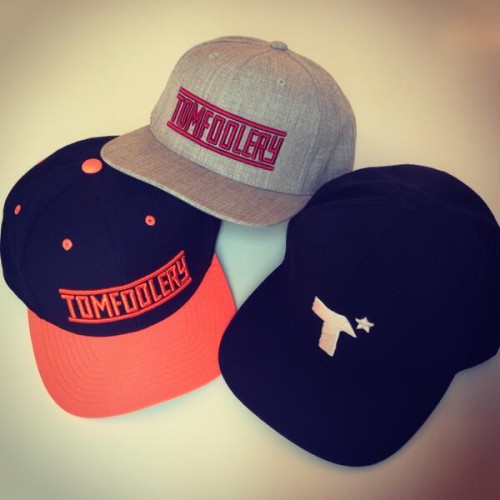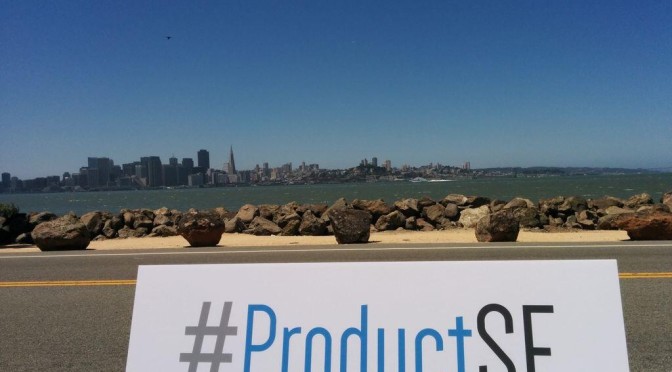Last week I attended the 2014 edition of Building Better Products, an invitation only conference hosted by Ty Ahmad-Taylor of Samsung Electronics and Josh Elman of Greylock Partners. As with last year’s conference, it was an agenda packed with interesting speakers that came to share their perspective on the role of a Product Manager at a tech company, sharing lessons learned and what it takes to succeed. The format was updated to include a mix of pechakucha-style lightning talks interspersed with longer presentations and panel discussions.
Because of a morning SFO drop-off run, I missed the “palette-cleanser” talk that kicked things off for the day (a history of Treasure Island) and Julie Zhuo‘s talk on how to work with designers. I’m sorry to have missed Julie’s talk but you can read her many excellent talks about the design process on her Medium page.
I took notes on some of the presentations and here were my favorites.
Mina Radhakrishnan shared her experiences as one of the first Product Managers at Uber during their first international expansion and the growing pains the company went through to develop a process which now lets them spin up multiple locations each week. We learned of design challenges as the nomenclature for hired cars vary from city to city. An SUV in London is a “big car” while a private car is a “black car” but tabs for “Big” and “Black” don’t really work so other solutions were needed.
A template that might work in one country falls apart in another so you need to, “design for flexibility” and use templates that can be adopted to fit local needs. Because of the need for speed and scale, these templates need to be designed in a way that local operations teams can unleash their “operational creativity” without having to check in with headquarters.
What struck me most was the intense drive and ambition of Uber CEO, Travis Kalanick, enabled the team to roll over technical and legal challenges that would have sidetracked most companies. In the drive to launch Uber in Paris in time for Le Web, they slammed a product together that had to be re-built from the ground up post-launch. It is rare to find a start-up that would knowingly build something they know they are going to tear apart and build again and support for that way of working has to come from the top.

While talking about Uber’s various publicity stunts (ubercade, uber ice cream, uberkittens) Mina reminded us that Uber is not strictly a transportation company and that their mission, “to get you where you want to go” should be interpreted broadly.
Vince Maniago from Mint gave an abbreviated version of the talk embedded below to explain specific actions he took to improve sign-ups. As a financial service, his challenge was to get people to connect their banking accounts with the mint.com aggregation service. By putting his name on follow-up emails to anyone who didn’t complete this action, he was able to significantly improve completion rates and get people over the trust factor.
Some other tips Vince shared included use of Amazon’s Mechanical Turk service for user-testing and Mental Notes cards (note: sold out) as inspiration for the types of message variations you can test.
David Hahn, who was at LinkedIn during the early days, spoke about the freemium business model upon which that service is built and the evolution of their landing pages. The page has gone through many iterations but each time they have tried to add something new, they have found that the obsessive simplification of the erroneous was the best contribution to their conversion rates. “The best optimizations are getting rid of things.”
Wook Chung works with brand advertisers for Samsung and shared humorous anecdotes about working with Madison Avenue and the importance of continually checking in with your customer whose needs are like Heisenberg’s Uncertainty Principle. Advertising trends are continually in motion so freezing requirements and then going off to build them will, by definition, obsolete anything you launch. Better to involve your customer at each stage and get them invested in your solution and inform your development.
A series of short talks followed. Ken Norton (Google Ventures) on using Don Lowry’s True Colors rubric to build teams and modulate communication. Ian Spalter, UX Lead at YouTube, gave a rousing comparison of UX/Product archetypes as Game of Thrones characters and reminded all of us to, “respect the craft” when giving feedback.
During the panel discussion on Product Development in the Enterprise Sol Lipman, who was CPO at TomFoolery, shared lessons learned as a start-up trying to change enterprise software (“we made consumer-grade products for the enterprise”). One of their early lessons (and we’ve heard this before) is that you need to focus on utilization because, “just because someone is going to pay you doesn’t mean their people are going to use your product.”
One other tidbit was Sol’s singular vision that the all products for the enterprise should be built “sideways” to allow collaboration across traditional networks. Do not build your product around a company domain and allow for self-defined networks which will be how workgroups form in the future (think Dropbox). Email, which is usually dominated by company domains, is not a useful unique identifier as it locks each customer into their silo. On the other hand, a cell phone number, which everyone has and usually carries from job to job, allows for infinite connections which will persist and retain their viral effectiveness.

Ellen Chisa from Kickstarter shared the eight-month journey to a new start page. Reminding us all that Kickstarter is primarily a platform for artists so the founders were concerned less with a metrics-driven design process and more with the embodiment of a vision. If forgot the name of the poet she quoted but, to paraphrase, if Kickstarter was going to set out to build a ship, they would not instruct them the details of woodworking, they would, “teach men to yearn for the sea.”

In the end, there were 11 major designs for the front page with hundreds of iterations in between until they found a design they felt worked. But all was not lost, many of the ideas hashed out made their way into other areas of the product. Perhaps less efficient, the Kickstarter way was more holistic.
Shiva Rajaraman, from YouTube, gave a great talk, “Product Management: From Meh to Awesome” that was not about use cases or tips and tricks but about approach. A Product Manager is the one that has the spotlight. No product is the result of a single person’s output and the PM should take pains to shine attention to all those that work on the product. And with a community-driven product such as YouTube it is especially important to point out what’s awesome about your community.
Check out the Likes/Dislikes on the Futurama Neutral Response clip below. Finding out that there is a community of people that obsessively maintain this delicate balance, “made his week.”
Thinking of YouTube as a platform transformed the way they have approached music companies and brands. Music fingerprinting and content ID was originally developed to go after copyright violations but when flipped around from a negative to a positive, it helps musicians understand how and where their music is being played. Harem Shake got such tremendous exposure through the fan videos that when it debuted on the charts, it was #1.
Shiva tells the story of Molly Kate Kestner who recorded her self-composed song on a broken iPhone that, within weeks becomes a top single on the iTunes charts. An open platform allows these stories to write themselves and a good Product Manager will look for them and hold them up for others to celebrate.
Thank you Josh & Ty for organizing a great day of talks, picking a great venue, and, as always, keeping everyone on schedule.
Further Reading:
- Adam Sigel has a great wrap-up at Re-capping ProductsSF
- Ellen Chisa, one of the speakers, shares her decision to attend
- Greylock has posted videos of all presentations on YouTube

Leave a comment